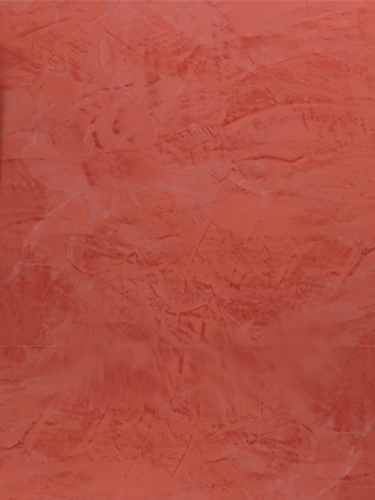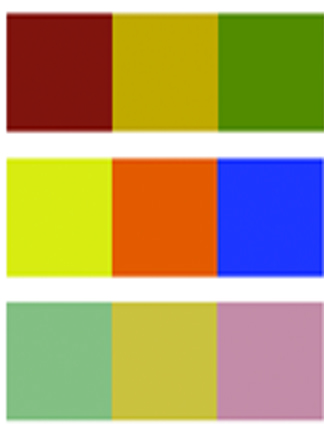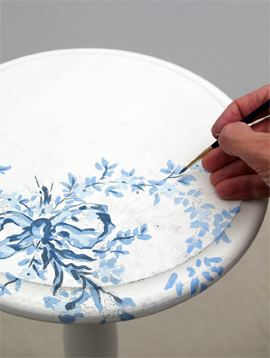Distressed Furniture

Distressed Furniture Effects
To start the English Country series I’ve chosen to paint an old bench, worn over time. Something that might be found in a country garden, something that is welcoming and has a story to tell. Through layers of paint we see colors of past days. Memories of styles gone-by glimpsing at us and inviting us into the garden for a rest. This technique, using wax, evokes all these feelings, a comfy mismatch of layers of history, once vibrant but now muted to an unassuming and almost forgotten presence. Where neutral colors of pale blues and greens complement rose lavenders and earthen browns.
English Country Style
In the English countryside, pretty villages dot rolling hills and cobblestones line narrow medieval streets. Come in through the garden gate, and you'll find a steep thatched roof overhanging ancient leaded glass windows. Old garden roses creep around the carved oak door. The grounds, whether a picturesque cottage garden or the rolling parkland of the local manor house, are lovingly cared for. Everything is fresh, tidy, and welcoming.
Color Palette
Color 1 – Rose Quartz

Color 2 – Sage Green

Color 3 – Dover Grey

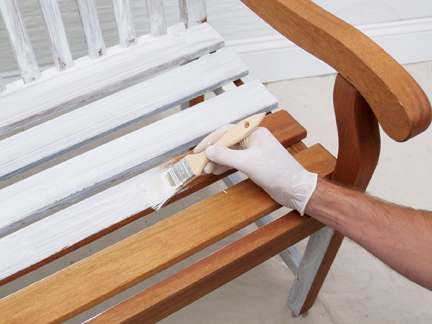
Step 1:
Using a 2 inch paint brush, I loosely apply a coat of white latex primer over my bench. I brush in straight motions, following the lines of the furniture.
Step 2:
When this is dry I take the Bees wax stick and lightly rub the wax onto the outside edges of the bench. Areas like the arms, front seat edge and top edge of the back rest. This should be done sparingly, as we will apply more wax later in this tutorial.
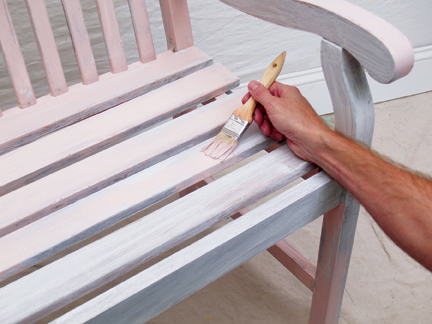
Step 3:
Now I will apply color 1, Rose Quartz. Using a 1 inch brush I randomly paint the Rose Quartz over the bench, using long broad strokes. Don’t attempt to cover the entire bench, as we just need to create the impression of additional colors that ‘flash’ through the final color application.
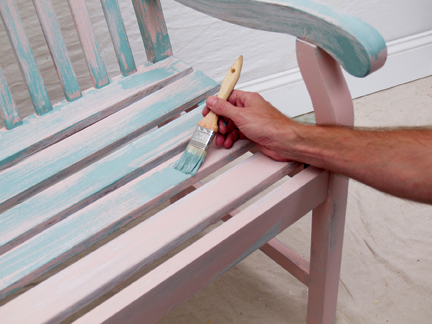
Step 4:
Follow the same procedure with color 2, Sage Green. This time focus on filling in the void areas left by the Rose Quartz. Its OK to brush over the Rose Quartz in areas, creating a paint over paint effect.
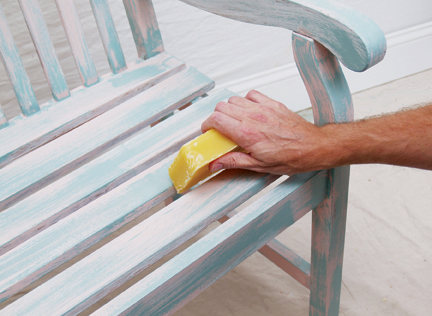
Step 5:
Now it is time to add more wax. Using the Bees Wax, rub over the bench in a random fashion. Keep in mind these waxed areas that will be removed in the final step, revealing the layers of Sage Green and Rose Quartz beneath. Focus on the edges of the wooden slats, and areas of the bench that would naturally be exposed to wear and tear, such as the bench arms and seat.

Step 6:
Our final layer of paint can now be applied. Using a 2 inch brush, liberally apply color 3, Dover Grey, over the entire bench surface. Be sure to get the edges and corners. Don’t worry if the paint does not adhere to the areas previously coated in wax.
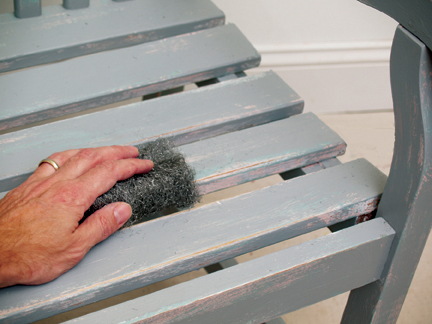
Step 7:
Once this has completely dried you can remove as much wax as possible. Using coarse steel wool, aggressively rub over the painted bench, working in the direction of the wood slats when ever possible. This will remove some of the Dover Grey, the wax and subsequent paint layers, revealing the undercolors and in some instances the white primer and bare wood of the bench.
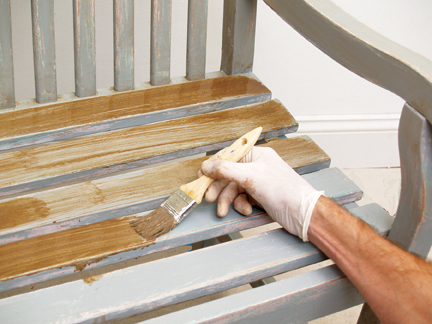
Step 8:
I like to add an antique glaze as a final step. This tends to darken or age any crisp or white areas, unify all the layers of paint and reinforce the feeling of old chipped paint wearing over time. Mix a glaze of Raw Umber and Burnt Umber in a bucket with ¼ cup latex glazing liquid. Add enough water to create a loose, fluid mixture. Liberally apply this solution over the entire bench and rub off, blot and soften with a clean rag until you reach your desired look.
Early American Style
Colonial Amercians drew inspriation from their European heritage. Curent design styles would filter across the ocean and become reinventedin early America. Proportion and scale took reign over ornementation, A neutral color palette of grey blue, greens and rose pinks is readily apparent.
Venetian Plaster
Polished Plaster, or Stucco Veneziano, is a Traditional wall treatment that provides a glossy, visually textured wall finish. Venetian Plaster is a natural formula composed of organic ingredients, calcium, and acrylic binders creating a decorative paste plaster for interior applications. Polishing the surface compresses the calcium within the compound, creating a narble-like finish, cool and hard to the touch.
This treatment is quite versitile, ranging from a rustic backdrop to a refined and elegant finish.
The Rustic Color Palette
The Rustic Style color palette falls within a distinct range of color tones and is essential in creating a successful Rustic interior. By using the appropriate color tones you can create a variety of design styles ranging from Period and Historic, regional or thematic. Color helps define our experiences within an interior and exterior environment. It affects us on a physical, emotional, and spiritual level and can be calming and passive, expressive and vital.
Painted Floral Details
Floral patterns used as accents in fabrics and furniture are common place details in the English Country home. These graceful and organic patterns complement the cozy interior of this style and work particularly well with lace window treatments, an heirloom tea service set and the natural and rustic charm of wooden ceiling beams and slightly irregularly textured walls.



